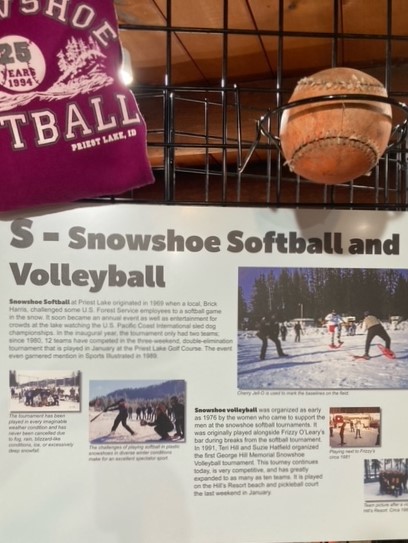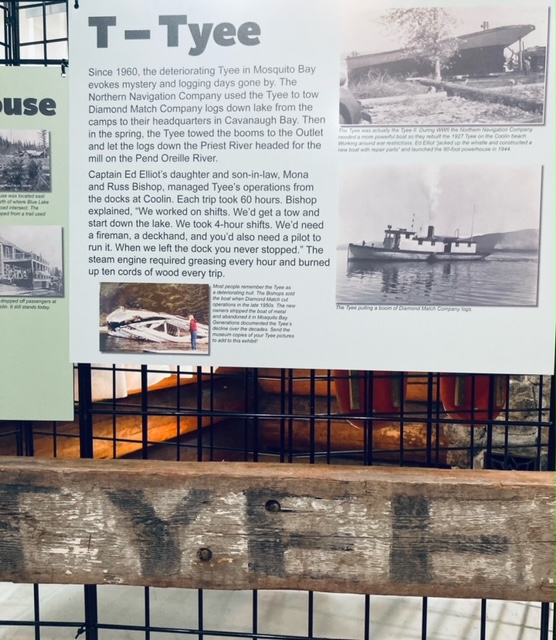With twenty-six letters in the English alphabet, museum volunteers faced the challenge of selecting from a broad range of Priest Lake artifacts, names, photographs, and stories, to match each alphabet letter with a piece of lake history. The project began on the museum porch last fall and will open to the public Memorial Day Weekend.
“Our volunteers did an amazing job of tracking down the photos and stories they wanted to highlight,” said museum historian, Kris Runberg Smith. “This exhibit is a fantastic blend of years, topics, and geographies around the lake. I’m excited to see it open.”
Twelve volunteers first selected their letter (some even selected more than one!), then researched in the museum, interviewed others around the lake, or referenced oral histories, and wrote up a description on their subject. Some were more challenging than others, that’s for sure! What letter would you pick to research?
It’s not too late to be involved! Because Y is for YOU. You’re a part of Priest Lake history, too, and we’d love to record your stories or post your photograph at the museum. Tag us on Facebook #PriestLakeMuseum #AtoZPriestLake, and be sure to visit the new exhibit. We can’t wait to hear which ones are your favorite and which ones surprise you.
In addition to our regularly scheduled talks and hikes, there will be several events related to the A-Z exhibit. Anyone want to learn how to pack a mule? Or paint and float a wooden boat? Check our Facebook page for details.

A is for Acknowledgements
Priest Lake’s Past A-Z became a crowd-sourced exhibit! With thanks and appreciation to:
Kelly Bacon-Hord (F)
Patty Engle (I & X)
Peggy Estey (G, P, & S)
Jim Fischer
Arley Sue Hagman (C & N)
Lori Hartman (Design)
Craig Hill
Doni Guyer (R)
Kaileene Krauth (ASL)
Carlos Landa
Earle and Judy Ruddach (D)
Shelly Tucker (W)
Tom Weitz (U)
Kristen Winn (B & K)
Cassie Wood (coloring book)




